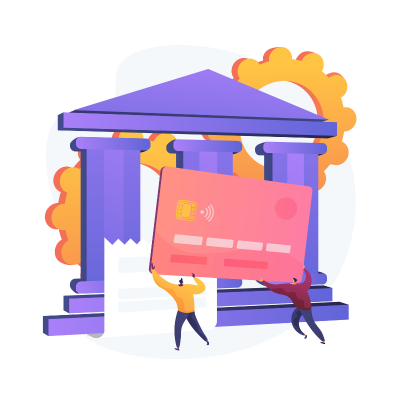Navigating the world of finance can be daunting, especially when it comes to loans and lenders.
Among the various options available, guarantor lenders have emerged as a viable solution for many, particularly those with less-than-perfect credit histories.
This guide aims to provide a clear understanding of guarantor lenders, their benefits, and how to choose the right one for your needs.
What Is a Guarantor Lender?
A guarantor lender is a type of financial institution or loan arrangement where a third party, known as a guarantor, agrees to repay the loan if the borrower defaults. This type of lending is particularly beneficial for individuals who may not have a strong credit history or sufficient collateral but have someone willing to back their loan application.
Guarantor lenders offer a range of financial products, from personal loans to business financing.
In essence, the guarantor acts as a safety net, providing lenders with an additional layer of security. This arrangement can make it easier for borrowers to access funds, often with more favorable terms than they would otherwise receive.
If the individual seeking the loan isn’t comfortable with this option or doesn’t want any possessions tied to the loan, looking at unsecured guarantor loans can provide the necessary perks.
Understanding the nuances of unsecured guarantor loans is crucial. These loans don’t require collateral, making them accessible for borrowers without significant assets. Still, they necessitate a trustworthy guarantor.
Are Guarantor Lenders a Good Idea?
For many borrowers, particularly those with credit challenges, guarantor lenders are a practical solution. They can be helpful for individuals looking for guarantor lenders for bad credit. Having a guarantor can increase the likelihood of loan approval and potentially secure more favorable loan terms, such as lower interest rates or higher loan amounts.
However, it’s important to carefully consider the implications for the guarantor. The guarantor should be someone who fully understands the responsibility and is financially capable of covering the loan if necessary.
It’s advisable to have or create a list of guarantor lenders who are willing to accept the responsibility.
It’s equally vital to consider the long-term financial implications for both the borrower and the guarantor. Open communication and a clear agreement can help mitigate future financial misunderstandings
Who could be a guarantor for a loan you may wonder, well, it could be a family member, a close friend, or someone else who trusts the borrower’s ability to repay the loan. The best guarantor lenders are people who you trust and can cover any potential expenses in case you can’t.
What Are the Types of Guarantors?
When exploring guarantor lenders, it’s essential to understand the different types of guarantors available:
1. Personal Guarantor: Typically a family member or friend who knows the borrower well and agrees to back the loan based on personal trust.
2. Business Guarantor: In a business context, another business entity or a business partner may act as a guarantor, especially in situations where a company is seeking a loan.
3. Asset Guarantor: This is someone who offers a tangible asset, like property or investments, as security for the loan.
In each case, the guarantor’s financial stability and creditworthiness are crucial factors. Additionally, the level of commitment and understanding of the guarantor’s role varies depending on the relationship with the borrower and the type of guarantor.
All potential guarantors must understand their obligations and the potential risks involved.
Pros & Cons of a Guarantor Lender
When considering guarantor lenders, it’s important to weigh their advantages and disadvantages to make an informed decision.
Pros:
1. Increased Accessibility: For those with poor credit or limited financial history, guarantor lenders provide an opportunity to access loans.
2. Better Terms: Borrowers may secure loans with lower interest rates and better terms due to the added security the guarantor provides.
3. Credit Building: Successfully repaying a guarantor loan can help borrowers build or improve their credit scores.
Cons:
1. Potential Relationship Strain: If the borrower fails to repay, the guarantor must cover the debt, which could strain personal relationships.
2. Financial Risk for Guarantor: Guarantors must be prepared to assume financial responsibility if the borrower defaults.
3. Limited Options: The pool of willing and financially capable guarantors can be small, limiting options for some borrowers.
How To Choose the Right Guarantor Lender for Your Business In 2024
Choosing the right guarantor lender in 2024 involves several key considerations:
- Reputation and Reliability: Research lenders to ensure they have a solid reputation and are known for fair practices.
- Loan Terms: Compare interest rates, fees, and terms offered by different lenders. Look for transparency and favorable conditions.
- Guarantor Requirements: Understand each lender’s criteria for guarantors. This can vary widely, so choose a lender whose requirements align with your potential guarantor’s profile.
- Support and Guidance: Opt for lenders who offer support and guidance throughout the loan process. Resources like microloans can also provide additional avenues for financing.
- Industry Specialization: If your business operates in a niche industry, consider lenders with experience in that sector. For instance, businesses in the trucking industry might benefit from lenders specializing in trucking business loans.
- Consider the lender’s adaptability to market changes and economic fluctuations, which is particularly relevant in the dynamic financial landscape of 2024.
A Careful Solution to Credit Walls
Guarantor lenders offer a viable solution for many businesses and individuals, especially those facing credit challenges.
They can be instrumental in accessing necessary funds while also helping to build creditworthiness over time. However, it’s crucial to approach this option with a clear understanding of both the benefits and risks involved.
By carefully choosing the right guarantor and lender, borrowers can leverage these loans to support their financial goals and business growth. As with any financial decision, thorough research and consideration of one’s specific needs and circumstances are key to making the best choice.
Ultimately, the decision to use a guarantor lender should be part of a comprehensive financial strategy, considering both current needs and future financial stability.













